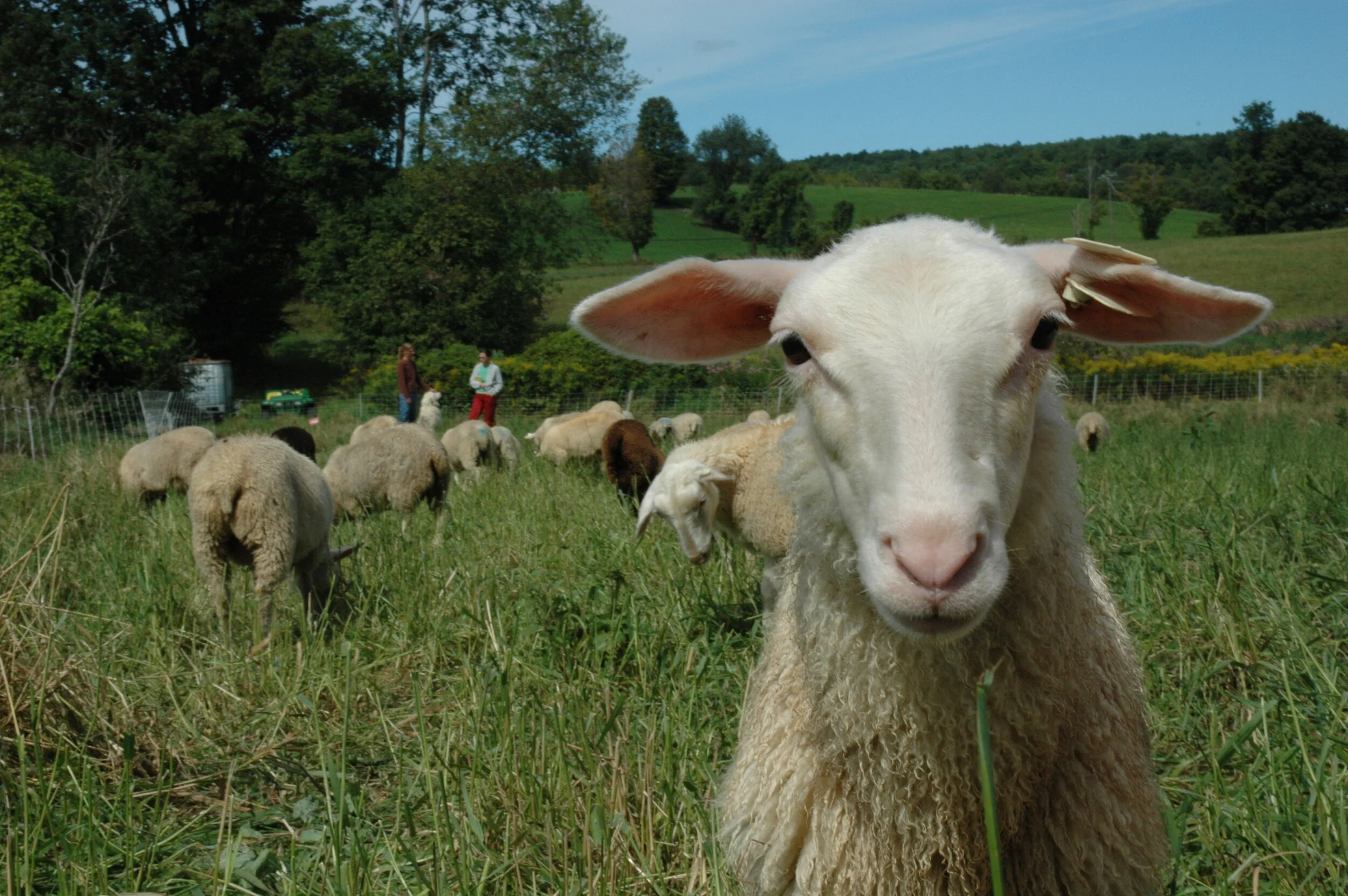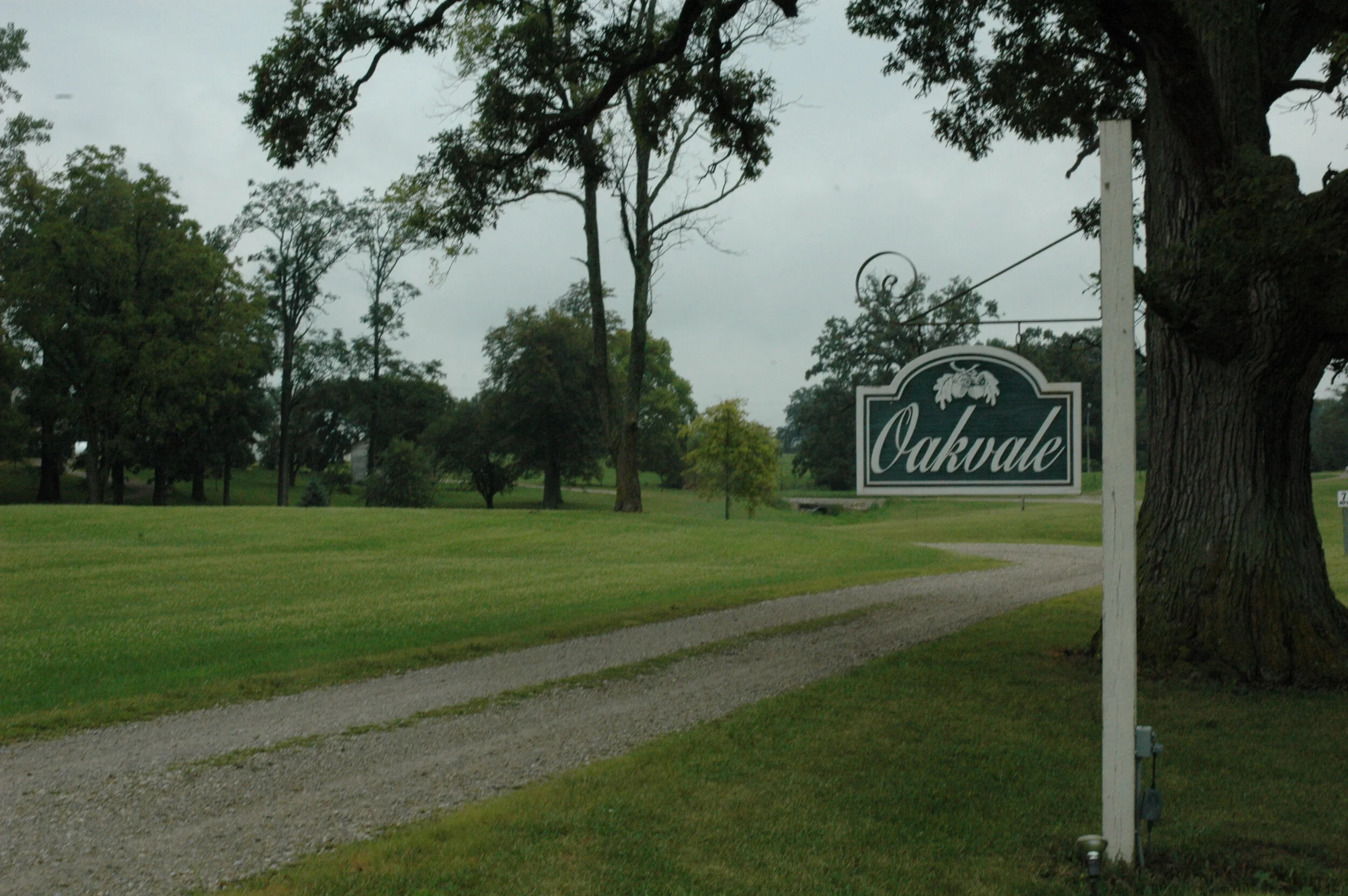3 Corner Field Farm: New York
September 2006
Name: 3 Corner Field Farm [Update-As of August 2020, it appears the farm is temporarily closed.]
Owners: Karen Weinberg and Paul Borghard
Location: Shushan, NY
Animals: Milking 120 ewes and raising hundreds of lambs each year for meat and some for replacement milkers.
Cheeses/Products: Brebis Blanc, Shushan Snow, Feta, Ricotta, milk, yogurt, grass-fed lamb meat, sheepskins
Karen Weinberg has always known that she wanted to be a farmer. She didn’t grow up on a farm, she didn’t spend time working on a farm- yet somehow she just knew that farming was in the cards for her. Being the ambitious woman that she is she lobbied hard for her dream with her husband Paul and yet she was humble enough to take his coaching. He explained to her that in order to be a successful farmer she needed to have capital and an education. Once she had her Ph.D., her first baby, and the couple owned a small apartment in Brooklyn they began looking for farmland in New York state.
They settled on the farm they own now after renovating and selling another property in Washington County. Shortly after purchasing their farm, Paul took advantage of an offer to work in Paris and they moved to France with their two young daughters. During their years in France, Karen fell in love with cheese and began to dream about making cheese herself someday. When they returned to New York she hit the ground running to transform their property into a sheep dairy; renovating existing farm structures and evaluating the pastures. Their initial plan was to milk sheep and sell all of the milk wholesale, they had an outlet for this nearby- Old Chatham Sheepherding Company. This plan got them started milking sheep and eventually they transitioned to making yogurt and cheese on their own. In recent years they expanded their offering by raising their annual crop of lambs on pasture to add meat to their list of products.
3 Corner Field Farm is approximately 100 acres with about 40 acres of grazable pasture. Karen has worked with neighbors over the past 5 years to expand their grazing land to 120 acres through leases. Many people in their community were doubtful when they began, they said that running sheep on the land would destroy the pastures (this is the reputation of sheep). 3 Corner’s pastures are luscious, verdant- teeming with variety and life. Karen explained that after a couple of seasons neighbors noticed the transformation in the pastures that had been grazed by the sheep and began to approach her to offer up their fields for grazing.
As we strolled around the farm before dinner, Karen talked about the meat side of her operation. All 3 Corner lambs get milk from their mothers for a few weeks and then they are transitioned carefully onto pasture. Lambing is the only part of the year when the animals (ewes and lambs) spend time in the barn. Male and female lambs are separated and rotated through different pastures- each of these paddocks is protected by a guard dog. Beginning in September, groups of lambs are selected (by size) every few weeks to go to slaughter. Either Karen or Paul drives the lambs to the meat processor (who has been carefully selected)- they do this in large part because they are committed to knowing that their animals are handled well throughout their entire lives, right through to the end.
The sheep at 3 Corner Field Farm are out on pasture their entire lives except when they are first born and then when they give birth. During the winter months, their long coats protect them from the cold and the frozen ground provides them with a dry and solid surface which is good for their hooves. Bales of feed are strewn about in different sections of the pastures so that the sheep’s manure is spread across the land and not overly concentrated in one area. The pastures are hayed periodically throughout the growing season, in between the times they are grazed by the ewes. There is a great, detailed explanation of the cyclical/seasonal progression of the ewes and the farm on the 3 Corner website.
The next morning we headed out to the milking parlor. Paul is the designated milker and is enjoying the arrival of fall because it means they have recently dropped to one milking per day. When the sheep come through the parlor they get a bit of grain to supplement the forage which makes up most of their diet. We were visiting the farm during a damp weather spell so while Paul milked he was also closely examining the ewes’ feet for soft spots. This is something that happens to their hooves when they don’t dry out completely- spots of irritation crop up in the crevices of their hooves. It is something he can treat quite easily when the ewes are all in the stanchion.
After milking the ewes are walked out to pasture; they are put on a new section every day. We followed them with Karen and their trusty sheepdog Sweep. The pasture was amazing- the alfalfa was at least knee-high and there were numerous other species growing up around it. While we watched the sheep wade into the green that touched their bellies Karen debunked myths about sheep destroying pasture. She explained that sheep love the most tender parts of the plants they eat evidenced by the previous day’s pasture where we could see that all that remained were stalky, woody shoots of grasses and legumes. Sheep who are turned out on meager pastures will get close down to the earth and nip at the tender, fresh beginnings of grass thus their reputation for ruining pasture. Like any other ruminant sheep will overgraze an area if they are not managed properly and given enough pasture to eat.
In the afternoon we made Feta. Karen takes immense pleasure in the cheesemaking part of her day. Often she makes on her own although these days she gets some help from her eldest daughter Emily. Her vat is small and she does everything completely by hand including cutting the curd with a knife and stirring it for about 20 minutes with her hands and arms. She likes the direct, tactile interaction with the curd and feels it has helped her learn more quickly because she is working with all of her senses.
3 Corner Field Farm is made up of four small businesses: a sheep dairy (not to mention a haying operation they put up a lot of their own feed for winter), a creamery, pastured-lamb production, and also sheepskin processing. The latter two bring in additional income and they honor the tradition of respecting the animals in that the farm provides them with the best life possible and then does not waste any parts of the animals once they are slaughtered.
During our trip, I’ve thought a great deal about the lack of connection in the way that we think about dairy products and the animals it takes to produce them. There is not much to remind us of that connection in our day to day lives and at 3 Corner Field Farm, the connection is completely visible. This farm reminded me to be thankful to the sheep for providing us with food and also to be thankful that people like Karen Weinberg and her family become farmers.







